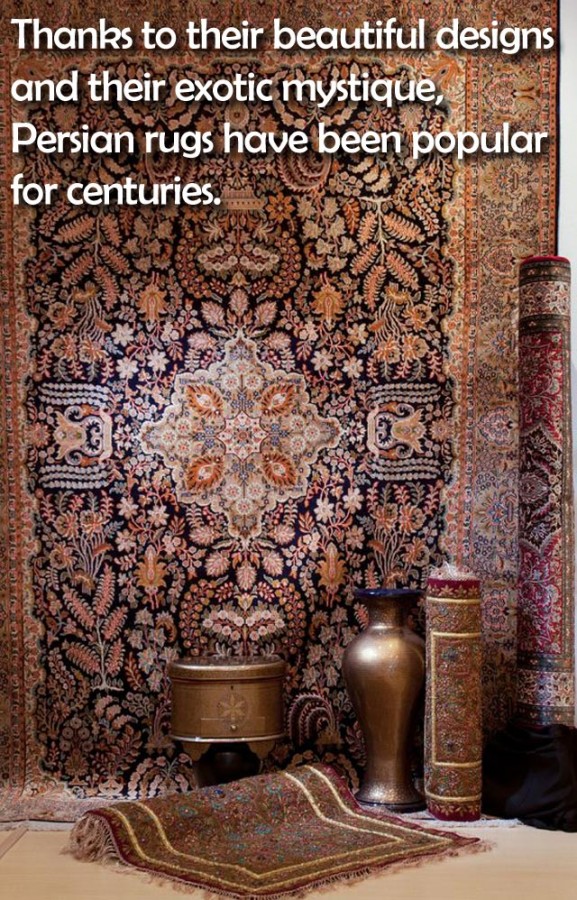
The Persian rug, or Persian carpet, is an essential textile craft from Middle Eastern countries such as Iran and Turkey. By now, its basic design has become familiar to us and most of us have Persian-style floor coverings in our homes. It is normally very large, with a dark background of burgundy or pine green or black. Upon it are a large amount of symbols and decorations, such as medallions, animals, flowers, and flourishes. It is then often finished with light cream or beige fringes on its short sides.
Did you know that there is no such country as Persia any longer? Iran is the modern-day version of this mystical and exotic country. Carpet and rug weaving are a large part of Persian culture, and also a huge export business for Iran. However, many reproductions and similar designs exist today. You probably have one in your home!
History
With countries with as ancient a history as Iran and Turkey, you can definitely expect that Persian rugs have been around for a long time. Some have been discovered that date back to 500 B.C. Chinese texts in the year 241 mention Persian rugs, so we know that these were not just being crafted in the country but also traded to other countries.
However, unlike pottery or stone which is more durable, hand-woven Persian rugs made from wool, silk, or cotton will disintegrate over time. Thus, it is hard to find many examples of very early rugs. Some of the most beautiful ones come from the ‘golden age’ of the Middle East, from the 6th through the 8th centuries.
Three Sizes
They can be classified in three styles, according to their sizes and uses. The largest, which traditionally measures over 6 feet x 4 feet, is called “Farsh.” The next size, which is known as “small rug” is called “Qalicheh.” The third group is called “Gelim” and can be any size, but they are used mainly by nomadic peoples.
These three sizes are virtually unknown to buyers outside of Iran and Turkey, but they are useful for categorizing authentic rugs. They are such a part of these cultures that they are an integral aspect of Iranian life.
Enduring Popularity
Thanks to their beautiful designs and their exotic mystique, they have been popular for centuries. The Victorians loved them and used them to cover the large floors in antique homes. Many of the most coveted ones come from the 19th century, for this reason. The Victorians were fascinated by exotic wares from China and Turkey, since trade opened up and new wares flooded the markets.
They have remained popular despite changes in decorating trends. This is probably due to their inherent beauty and lasting durability.
Persian Rugs Today
They are found in millions of homes today, since their designs are traditional and versatile. They are also known by different names, including Persian, Chinese, Tibetan, and oriental rugs. However, these rugs all have their origin in Iran and Turkey. They are made from so many different colors that they can become part of many decorating styles.
At one time, the designs on Persian rugs had an important significance for the maker. For example, a wedding rug would contain symbols that ensured future happiness in marriage. Nowadays, the designs tend to be more for aesthetic reasons.
Persian Rug Fibers
They are most commonly made of wool, silk, or cotton. They are hand-knotted and made of wool. Hand-knotted wool items are usually made by hand rather than machine and require many thousands of knots to create the intricate designs. Silk Persian rugs are usually made using a tufting process rather than knotting. Cotton is less expensively made and so aren’t as pricey or as well-crafted.
If you’re considering whether to purchase one for your home, then take into account how it has been constructed. Ones made of wool will be the best purchase, since it will last the longest and be the most durable. Rugs from Persia have a long history and will continue to be part of the home decorating scene for decades to come.